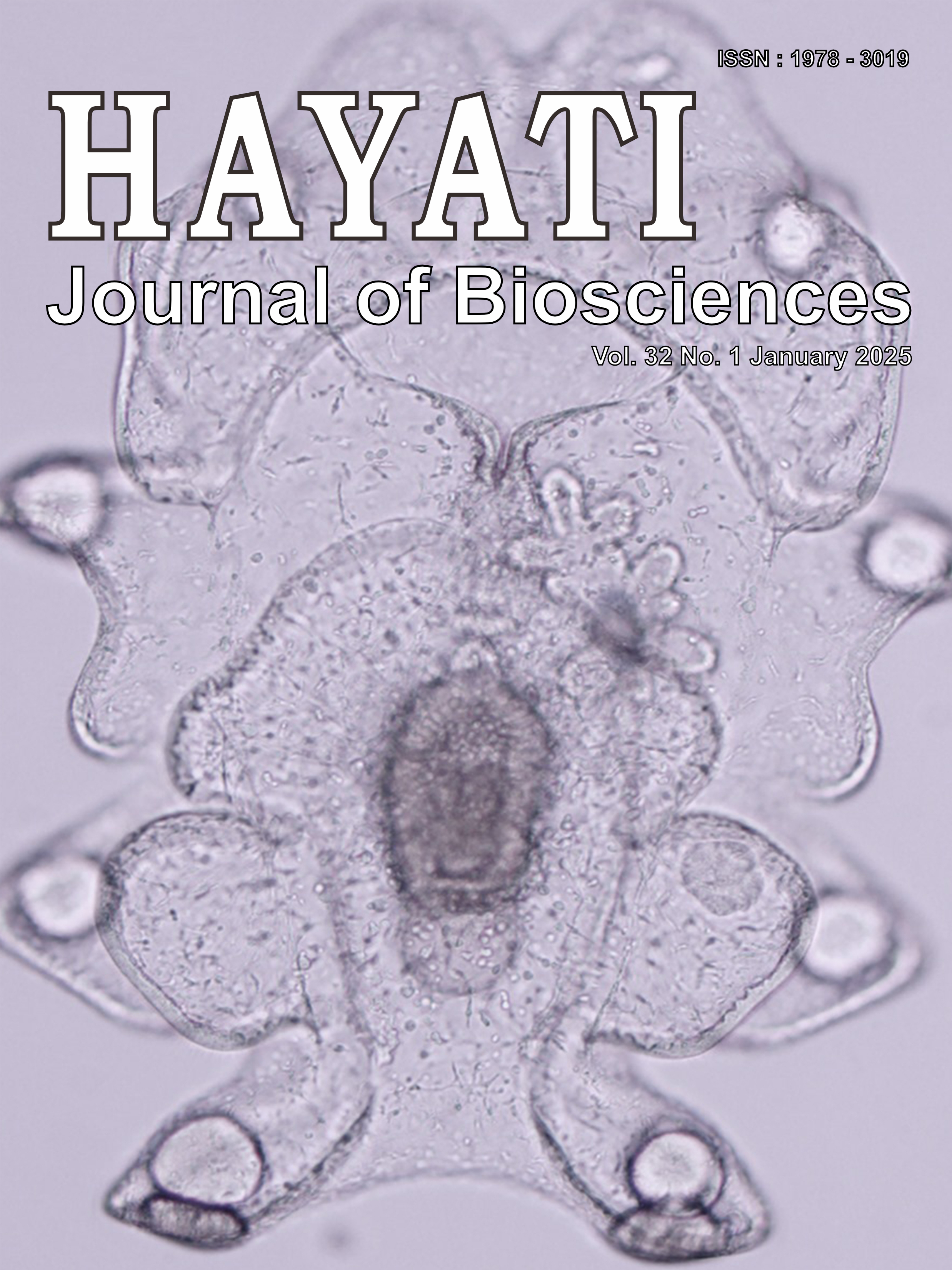Evaluating the Cytotoxic Effects of Ethanol and n-Hexane Extracts from Black Cumin Seeds (Nigella sativa) on B16F10 Mouse Melanoma Cells : A Preliminary Investigation into Vitiligo Treatment
Abstract
Black cumin (Nigella sativa) is a herbal plant that has been cultivated locally in Indonesia and is traditionally used for various diseases. Thymoquinone, one of the main components, is rich in biological activity. In several countries, topical application of its oil on human skin with vitiligo can stimulate skin repigmentation with minimal side effects. This study aims to determine the viability of B16F10 melanoma mouse cells against ethanol and n-hexane extracts of black cumin seeds through the 3-(4,5-dimethylthiazol-2-yl)-2,5-diphenyltetrazolium bromide (MTT) assay. The ethanol extract (EE) yield was 14.306%, and the n-hexane extract (NHE) was 7.442%. Phytochemical screening of EE detected flavonoids, alkaloids, saponins, and steroids, and High-performance liquid chromatography (HPLC) detected 0.040% thymoquinone. The MTT test showed cell viability was >100% from EE at all treatment concentrations, namely 0.75-100 ppm and only 0.75-6.25 ppm for NHE. In conclusion, this study indicates that 96% EE of Nigella sativa is less toxic than NHE on B16F10 mouse melanoma cells and has potential as an alternative treatment for vitiligo, which needs to be proven in further research.
Downloads
Copyright (c) 2025 Dian Pratiwi, Silmi Mariya, Raendi Rayendra, Agus Setiyono

This work is licensed under a Creative Commons Attribution-NonCommercial 4.0 International License.
HAYATI J Biosci is an open access journal and the article's license is CC-BY-NC. This license lets others distribute, remix, tweak, and build upon author's work, as long as they credit the original creation. Authors retain copyright and grant the journal/publisher non exclusive publishing rights with the work simultaneously licensed under a https://creativecommons.org/

























.png) IPB University
IPB University Department of Biology
Department of Biology The Indonesian Biological Society
The Indonesian Biological Society 

